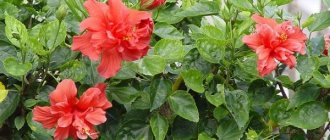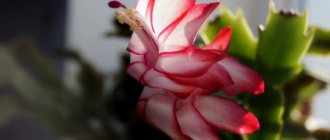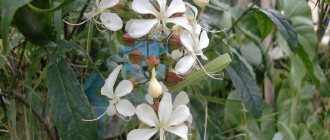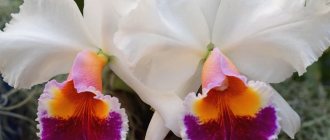Author: Elena N. https://floristics.info/ru/index.php?option=com_contact&view=contact&id=19 Category: Garden plants Published: February 18, 2019Last edits: November 03, 2020
- When to plant
- Rules of care
- Seaside cineraria (cineraria maritima)
In the garden, cineraria is grown as an annual or biennial. In indoor culture, this plant can bloom annually from December to March. There are already about 1300 species of cineraria. Most of them are grown for their flowers, and coastal cineraria is valuable for its either gray or silvery leaves.
Each type of cineraria has its own requirements for soil, conditions and care. From our article you can find out:
- how to sow cineraria for seedlings;
- how to transplant seedlings into pots or open ground;
- how to care for the plant before, during and after flowering;
- how to propagate cineraria.
In addition, you will learn which types of this plant are most often grown in culture.
Planting and caring for cineraria
- Planting: sowing seeds for seedlings in early April, planting seedlings in open ground in mid-May.
- Flowering: from mid-June until frost.
- Lighting: bright light in the morning and partial shade in the afternoon.
- Soil: fertile, well-drained, neutral or slightly alkaline.
- Watering: abundant, regular.
- Fertilizing: 2 times a month with complex mineral fertilizers.
- Reproduction: flowering species - by seed, decorative foliage - by seeds and cuttings.
- Pests: aphids, spider mites.
- Diseases: powdery mildew, rust.
Read more about growing cineraria below.
Cineraria (lat. Cineraria) is the name of the genus of the Aster family, or Asteraceae. Among the species of cineraria used in ornamental gardening, there are both representatives of this genus and species that belong to the genus of ragworts (lat. Senecio), close to cineraria, of the ragwort tribe of the same family Asteraceae. There are about fifty representatives of the genus Cineraria in nature; according to various sources, there are from one to three thousand species of ragworts. In this article we will talk about the most popular types of both cineraria and ragworts used in ornamental gardening. So, cineraria flowers...
- How to change the “strawberry place” correctly
Botanical description
The cineraria plant (the name is translated from Latin as “ashen”) can be both a subshrub and a herbaceous plant. In nature, cineraria are most widespread in Madagascar and the tropics of Africa. In indoor gardening, only the bloody cineraria (Cineraria cruenta), also known as the hybrid cineraria (Cineraria hybrida), is common, although in fact it is a hybrid ragus. In garden culture, the cineraria flower is grown mainly as an annual or biennial. The height of cineraria is from 30 to 90 cm, the stem is highly branched, the leaves are large, petiolate, lyre-shaped or oval, pinnately dissected in many species. Both stems and leaves are pubescent. The terminal corymbose inflorescences consist of simple or double baskets with reed flowers of red, white, yellow, purple, surrounding an island of yellow tubular flowers. Cineraria blooms from mid-June until frost.
Growing cineraria from seeds
Sowing seeds
If you want to know how to grow cineraria from seeds, then start by purchasing planting material, and although this African plant is not such a common occurrence in our gardens, it is quite possible to buy seeds. By the way, the germination rate of cineraria seeds is very high. Sowing cineraria for seedlings is carried out in early April: cineraria seeds are sown in a container filled with a mixture of sand and peat in equal parts, without embedding them in the soil, but compacting the surface after sowing with a wooden ruler, then spraying the soil with water from a sprayer or moistening the soil using the following method: bottom watering, cover the container with glass to create a greenhouse effect.
Growing seedlings
Typically, cineraria from seeds germinates in a week or ten days, and as soon as shoots appear, the container is moved to a well-lit place, and with the appearance of two true leaves, the seedlings dive into personal containers. You need to remove the seedling for replanting together with a lump of earth, and it is better to replant it in peat briquettes, so that later there will be no problems with planting seedlings in open ground. If you do everything on time and correctly, then by the time the seedlings are transplanted to a plot in the garden, they will develop into strong young plants.
When to sow cineraria seeds
It is better to sow silver cineraria for seedlings in late spring (for example, in March), but you can postpone this process until April and even May.
How to sow cineraria
There are several ways to sow Cineraria primaria for seedlings, each of which gives a positive result in most cases:
- Cineraria seeds are sown on top of the prepared moistened substrate. The seeds are not buried in the soil, but simply pressed lightly against it. After this, the container with the crops is placed in a warm place and covered with transparent cellophane film or glass.
- Another option is similar to the first, only unlike the first, the cineraria seeds are not pressed to the ground, but are simply sprinkled with a thin layer of sand. The crops are also covered with glass or film and placed in a warm place.
- The option is similar to the second, only instead of sand they use a thin sheet of paper, because... seeds germinate easily through it.
In order for the seeds to germinate as quickly as possible and in the maximum quantity, greenhouse conditions are created for the cineraria crops. This is precisely why they resort to covering with glass or film. Crops need to be moistened periodically; this is best done through spraying. If you water the cineraria crops in the usual way, the stream can wash out the seeds, but we don’t need that. You can water through the tray.
Planting cineraria
When to plant
Growing cineraria is not particularly troublesome, but the more information you have, the easier it will be for you. So, what are cineraria's preferences? The lighting is preferably bright, but with shading at midday. She needs fertile and well-drained soil, slightly alkaline or neutral. If you have found a suitable site and brought the soil to the required pH value, then wait until mid-May, when sudden night frosts are behind you, and begin transplanting the seedlings into open ground.
How to plant
Planting cineraria is carried out according to the usual principle: in holes dug at a distance of 20-25 cm from each other, cineraria seedlings are planted along with the soil in which it grew. After planting, tamp down the soil and water the area. If you have a feeling that frost may return, cover the planting of cineraria overnight with spunbond or lutrasil for the required time.
Requirements for planting site and soil
Cineraria is not too demanding, but for it to be truly beautiful, it needs to be provided with proper growing conditions.
The species requires planting in a sunny place; only in full sun do the bushes form silvery decorative pubescence.
In shaded areas, the color of the leaves will be green, which will make them less decorative. Ashtray is able to grow in fairly dry areas. Only after planting is it necessary to regularly water the seedlings to help them take root.
Ashgrass has low requirements and does well in any garden soil. However, if we want to grow it as a perennial, then we need to provide a fertile, permeable substrate.
The soil for cineraria should be:
- fertile;
- permeable;
- humus;
- with a neutral or slightly acidic pH (pH 6-7.3).
Cineraria care
Rules of care
Caring for cineraria is simple; the main thing is properly organized watering. If the plant lacks moisture, it weakens; if there is too much moisture, the roots of the cineraria rot. But almost all types of cineraria are drought-resistant, and in principle, natural precipitation is enough for them. After rain or watering, you need to remove weeds from the area and loosen the soil. Immediately remove faded flowers, this will extend the flowering period of cineraria.
- What to do if zinnia seedlings are stretched?
Feed cineraria two to three times a month with mineral fertilizers. Decorative flowering species during the budding period are fed alternately with organic and mineral fertilizers every week. In decorative deciduous species of cineraria, the buds are cut off immediately after appearance, so that the plant does not waste energy and nutrition on them. That's all you need to know about caring for cineraria.
Cineraria: care at home.
| Temperature | In summer – room temperature or slightly higher (but not more than +25°С), in winter – low (about +15°С). |
| Air humidity | Moderate. The plant can be sprayed periodically, protecting flowers and buds from moisture. |
| Lighting | Intense but diffuse. |
| Watering | Regular, moderate, without overflowing or drying out the soil. |
| Soil for cineraria | Loose, nutritious, slightly acidified or neutral. |
| Feeding and fertilizer | Single season plants are not required. Bushes older than a year are fed during the period of active growth 1-2 times a month. |
| Cineraria transplant | Annual when grown for more than one season. |
| Reproduction | From seeds or stem cuttings. |
| Features of cultivation | Cineraria at home does not tolerate stagnation of air and moisture, so it needs regular ventilation and strict adherence to the watering regime. |
Requirements for planting soil and pot
This plant has a fairly voluminous root system, so the size of the pot should not be small , especially for adult specimens. A drainage hole in the pot is a must, since ashy ragwort does not tolerate the roots getting soaked. But even if you have a sufficiently large pot, it will not be possible to grow silver cineraria at home for more than one winter - the roots grow too much. The same thing happens with bloody ragwort, but for a different reason - it blooms in indoor conditions for only one season.
Despite the fact that the plant is a perennial, it is practically impossible to force it to produce flower stalks again.
Cineraria has a fairly voluminous root system, so the size of the pot should not be small.
The soil for ashy ragwort must satisfy the following conditions:
- light and nutritious;
- well aerated;
- easily allows moisture to pass through;
- have a neutral or slightly acidic reaction.
We can recommend a mixture of turf and leaf soil in equal parts with a small addition of sand.
Temperature, humidity and lighting
Despite its southern origin, this plant does not like high temperatures. It is the discrepancy between the temperature in the room and the requirements of the plant that explains many failures in breeding silver ragwort. The same can be said about indoor cineraria. For its successful existence, it requires an even cooler room. It is important not only to maintain the temperature range from 15 to 20 degrees, but also to ensure that there are no temperature fluctuations.
Silver ragwort does not tolerate excessive soil moisture, but it likes moist air. At the same time, it is undesirable to spray it, like all pubescent plants. But you can do it differently. Place pebbles at the bottom of a wide tray and add water. Pots with cineraria are placed on top of the pebbles so that their bottoms are on the pebbles but do not touch the water.
Silver groundsel does not tolerate excessive soil moisture, but it likes humid air.
This flower does not like direct sunlight. He is most comfortable on the windowsill of a window oriented east or west. Northeast and northwest orientations are also acceptable. If there is enough light coming into the window, you can even place it on the north window.
Important! Soil moisture should be moderate but constant. It is regulated by the correct watering regime.
Frequency and rules for watering home cineraria
Ashy ragwort should not be watered too often, but quite abundantly. Make sure that the water in the pot does not stagnate - this is detrimental to the plant. For irrigation, you should use well-settled water with a temperature of at least 20 degrees. Water should not get on the leaves of the plant.
Cineraria does not like direct sunlight
Spraying
Caring for cineraria at home may include regularly spraying the plant with warm, settled water, although the flower develops normally even at normal room humidity.
When spraying, it is important to ensure that water does not get on the flowers and buds.
Feeding
When Cineraria is grown in compost, care in the form of fertilizing is reduced to zero; this substrate itself is already quite nutritious. It is advisable that peat be present in the flower pot.
Trimming
Cineraria forms a compact and dense crown on its own, so it does not need additional pruning. However, in order for the plant to retain its decorative and attractive appearance for as long as possible, it is recommended to regularly remove wilted flowers and yellowing leaves.
Rest period
Most often, faded cineraria is simply thrown away, but if the plant is planned to be grown as a perennial, it is given a short rest period after the flowers have withered. At this time, the plant is cut by about half and transferred to a cooler, but well-lit room.
Watering is reduced to the required minimum, fertilizing is temporarily stopped.
Cineraria bloom
A cineraria plant at home, with proper care, can bloom at any time of the year, but usually the flowering period occurs in the spring months.
Corymbose inflorescences are located at the tops of adult shoots and consist of many small red, lilac, violet, white or pink flowers, similar to daisy flowers.
After flowering
It was already mentioned above that this very spectacular flowering plant in mid-latitudes is cultivated by gardeners as an annual. In this regard, after it fades, it is simply destroyed. However, it is quite possible to preserve decorative deciduous species until next year. To do this, they need to be prepared for wintering, namely, the bushes of the plant need to be covered with a layer of dried leaves. In spring, you need to remove the foliage, and then cut off the parts that have frozen slightly from the cineraria, as they can interfere with the growth of young shoots. There is also a second method that will help preserve this plant until spring. In autumn, it should be transplanted into a flower pot, and then transferred to a sufficiently lit, cool room. With the onset of next spring, all you have to do is transplant this flower into open ground.
Transfer
Don’t rush to replant a new bush you just bought, because first it needs to adapt and bloom once. After this, remove all the inflorescences, shorten the long shoots and replant the flower along with the clump into a larger pot.
Reproduction of cineraria
We have already talked about seed propagation, but only ornamental flowering species are propagated exclusively by seeds. For decorative deciduous varieties, there are other methods of propagation - vegetative. For example, seaside cineraria (Cineraria maritima) is propagated in the summer by cuttings 10 cm long. To do this, they make a “cutting box” - a portable box in which you plant the cuttings for rooting. The cuttings are needed so that you can easily move them in the garden from place to place, hiding the cuttings from the midday sun. You can make such a box from wooden boards and plywood.
A mixture of sand and garden soil is poured into the bottom of a box with drainage holes in a layer of 10 cm, on top of which is 5-7 cm of coarse river sand, the surface is well leveled and the soil is poured from a watering can with a pink solution of potassium permanganate. The lower cut of the cutting is dusted with Kornevin, then it is stuck into the soil in the cutting plant and the soil is lightly pressed around it. Then put half a plastic bottle on each cutting, slightly pressing its cut into the sand, and do not remove this kind of greenhouse until the cuttings take root.
You need to water the soil on top of the bottles every two days, if necessary. When the cuttings take root, you will need to remove the plastic from them every day for an hour or two, accustoming them to the environment in which they will grow. Then, one fine cloudy, or even better, rainy day, the bottles are removed completely. The cuttings overwinter in the cuttings in a cool room, and in the spring they are planted in the ground.
What plants are best to plant cineraria next to?
Cineraria is a universal plant, both indoor and outdoor. It can be planted as an independent crop, or can be combined with other flowers.
Looks good on flowerbeds and borders with bright flowers (pink, yellow, red, orange), as well as cold colors (blue, violet, blue, lilac), favorably emphasizing their beauty, while leaving due attention to yourself. It gives the flowerbed aesthetics and completeness, and is not planted just like grass.
With its help, you can even create patterns of varying complexity in flower beds, which can often be seen in city parks and in photos in groups dedicated to floriculture. The silver lawn looks really noble.
Looks good in the design of the lower tiers of multi-story flower beds and decorative borders around the flower bed.
Due to the unpretentiousness of cineraria, you can plant it with any plants and give complete freedom to your imagination. The only thing worth remembering is that neighboring flowers should not shade it too much.
Pests and diseases
Deciduous cineraria sometimes suffers from rust and powdery mildew (at too high temperatures and air humidity), as well as spider mites and aphids. Due to the dense pubescence of plants, it is easier to take preventive measures than to treat an already existing disease. As for insect pests, they are destroyed with systemic insecticides. In general, it must be said that all types of cineraria are very resistant to diseases and pests.
Cineraria after flowering
As already mentioned, cineraria in our climatic conditions is grown mainly as an annual, so after flowering the plants are destroyed. But you can try to preserve decorative deciduous species until next spring. To do this, the bushes are sprinkled with dry leaves for the winter. In the spring, after removing the foliage, trim off the frozen parts of the plants so that they do not interfere with the germination of young shoots. You can do it differently: dig up the cineraria, transplant it into pots and leave it to overwinter in a bright, cool room. In the spring, you can again plant the overwintered cineraria in the garden.
Preparing cineraria for winter
In the middle zone, cineraria is grown as an annual plant and is simply destroyed in late autumn, however, in areas with not too severe winters, you can try leaving varieties of the coastal species to overwinter in open ground.
To do this, in the fall the bushes are covered with dry leaves or spruce branches, and in the spring the frozen shoots are pruned to free up space for young growing shoots.
Some gardeners act differently - they dig up bushes in the fall and transplant them into containers, which are transferred to a cool and bright room for the winter.
In the spring they are transplanted again into open ground.
Types and varieties
The types of cineraria used in garden floriculture are divided into decorative-deciduous, which are grown mainly in open ground, and decorative-flowering, mostly cultivated as indoor plants.
- How to get friendly shoots: 3 reasons why seeds do not germinate on time or do not germinate at all!
Seaside cineraria (cineraria maritima)
Or seaside ragwort, or silver cineraria, or silver cineraria - an ornamental deciduous perennial with a rosette of silver-green leaves. Widely used in landscape design if you need to create a background for greenery or brightly colored flowers. Sometimes this species is also called “silver dust”. Popular varieties:
- Silver Dust - low bushes with lacy leaves;
- Cirrus are taller, lush bushes with oval, toothed leaves.
Hybrid cineraria (Cineraria hybrid)
Or red cineraria, also known as bloody cineraria, is a bushy ornamental flowering plant reaching a height of 30 centimeters or more. The leaves are round, large - from 10 to 20 cm in length, they are an excellent background for bright flowers, similar to daisies or daisies. Varieties:
- Grandiflora is a tall plant (50-70 cm in height), flower diameter is from 5 to 8 cm;
- Double – bush height from 35 to 70 cm, flower diameter up to 5 cm;
- Stellata – plant height 70-90 cm, flower diameter from 2 to 4 cm;
- Sympathy - differs in all possible combinations of two shades.
Elegant Cineraria (Senecio elegans)
This is a species with a highly branched stem up to 60 cm high, covered with sticky hairs like the leaves. The flowers are simple or double, collected in baskets, which in turn make up corymbose inflorescences. Blooms until frost. Varieties:
- Ligulosus – terry cineraria in a wide range of colors;
- Nanus - dwarf plants up to 25 cm tall.
What attracts cineraria gardeners
Cineraria is one of the spring plants along with primroses and pansies. This flower in a pot is a lovely gift for March 8, or any other day.
The attractiveness of the flower lies in the bright palette of petal colors and the ability to obtain blooming specimens at different times of the year. You need to count approximately 9 months until the desired date and sow the seeds for seedlings.
Description of the cineraria plant:
- Botanical classification: genus Pericallis (syn. Cineraria), family Asteraceae.
- Appearance: height from 20 to 60 cm, leaves are large, triangular-heart-shaped or ovate, dark green above, grayish green below.
- The inflorescences are complex, each basket consists of many marginal “petals” (reed flowers) and a center (small tubular flowers).
- The diameter of the basket inflorescences is from 2.5 to 5–8 cm.
- The baskets are collected in a flat or dome-shaped brush.
- The shades of the petals are pink, blue, cobalt blue, red, purple, crimson, amethyst, coral.
- Tubular flowers are the same color as reed flowers, but often darker.
There are single-color and two-color varieties of cineraria, the latter have colored petals along the edges and white ones at the base.
New items in the selection of cineraria-pericallis - terry baskets, almost black centers, bright blue petals.











